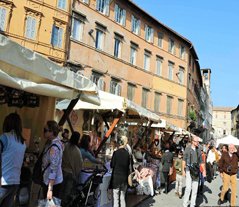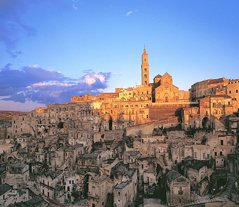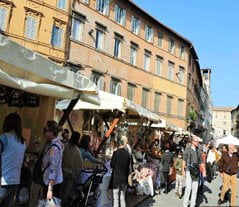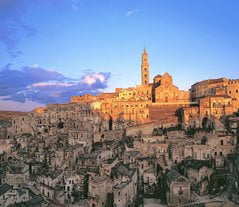The south-easter n Sicilian city of Modica is a UNESCO World Heritage Site known for its stunning Baroque architecture. Along with seven other towns in the Val di Noto, like Ragusa and Catania, Modica was rebuilt in 1693 following a powerful earthquake that devastated the area. The construction after the earthquake resulted in remarkable city planning and the culmination of Baroque style of art and architecture in Europe. Though Modica is stunning and filled with beautiful architecture, this city tucked away in the Hyblaean Mountains is also internationally famous for a much sweeter reason: chocolate.
n Sicilian city of Modica is a UNESCO World Heritage Site known for its stunning Baroque architecture. Along with seven other towns in the Val di Noto, like Ragusa and Catania, Modica was rebuilt in 1693 following a powerful earthquake that devastated the area. The construction after the earthquake resulted in remarkable city planning and the culmination of Baroque style of art and architecture in Europe. Though Modica is stunning and filled with beautiful architecture, this city tucked away in the Hyblaean Mountains is also internationally famous for a much sweeter reason: chocolate.
Cicero No.4 – Oct 2015
Perugia’s Fair of the Dead
 In the Italian region of Umbria, fairs are common events and they have a rich history that dates back to medieval times. The earliest fairs in this area were celebrations of Ognisanti (All Saints Day) at the beginning of November. These fairs developed into bustling markets that allowed commerce between medieval towns to flourish, and they also provided the opportunity for people to gather provisions for the winter. In modern times, these markets have greatly expanded, but much of the original spirit remains.
In the Italian region of Umbria, fairs are common events and they have a rich history that dates back to medieval times. The earliest fairs in this area were celebrations of Ognisanti (All Saints Day) at the beginning of November. These fairs developed into bustling markets that allowed commerce between medieval towns to flourish, and they also provided the opportunity for people to gather provisions for the winter. In modern times, these markets have greatly expanded, but much of the original spirit remains.
Matera: European Capital of Culture 2019
 The European Capital of Culture is a title given to a European city for an interval of one year during which the city will organize cultural events showcasing both the city and its role in Europe. Established in 1985, this distinction aims to promote European unity. The title is an opportunity for European cities to gain international attention as well as obtain possible economic and social benefits. For the year 2019, an international panel of cultural experts have chosen the proposals of Matera, Italy and Plovdiv, Bulgaria. Several cities in Italy have been awarded this distinction before (such as Florence, Bologna, and Genoa) but this is the first time a city in southern Italy has been chosen by the panel, and the honor is long overdue.
The European Capital of Culture is a title given to a European city for an interval of one year during which the city will organize cultural events showcasing both the city and its role in Europe. Established in 1985, this distinction aims to promote European unity. The title is an opportunity for European cities to gain international attention as well as obtain possible economic and social benefits. For the year 2019, an international panel of cultural experts have chosen the proposals of Matera, Italy and Plovdiv, Bulgaria. Several cities in Italy have been awarded this distinction before (such as Florence, Bologna, and Genoa) but this is the first time a city in southern Italy has been chosen by the panel, and the honor is long overdue.



